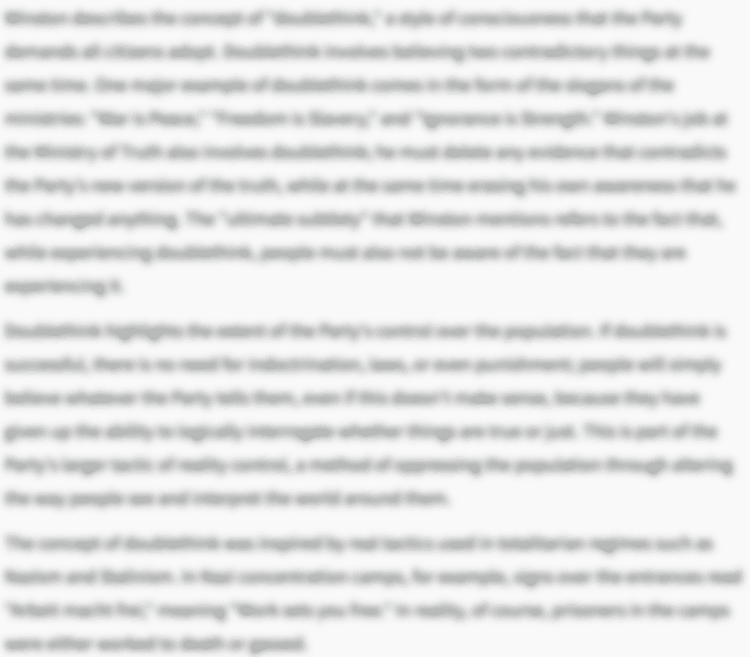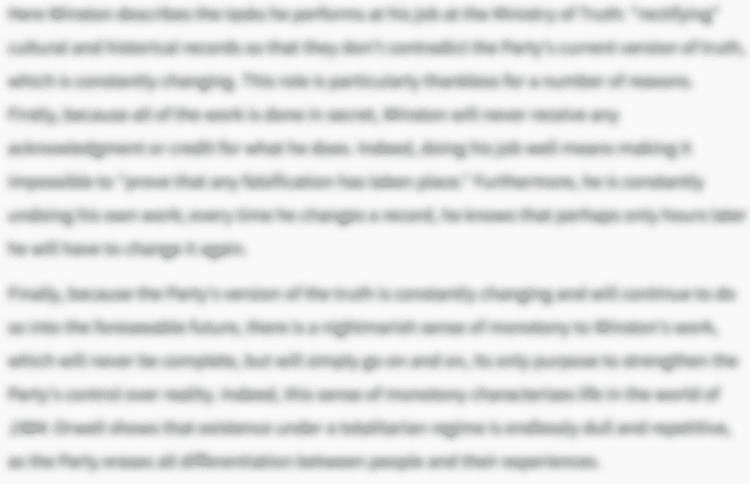When white people say "Justice," they mean "Just us."
—Black American folk aphorism.
White supremacy is the unnamed political system that has made the modern world what it is today.
The “Racial Contract,” then, is intended as a conceptual bridge between two areas now largely segregated from each other: on the one hand, the world of mainstream (i.e., white) ethics and political philosophy, preoccupied with discussions of justice and rights in the abstract, on the other hand, the world of Native American, African American, and Third and Fourth World political thought, historically focused on issues of conquest, imperialism, colonialism, white settlement, land rights, race and racism, slavery, jim crow, reparations, apartheid, cultural authenticity, national identity, indigenismo, Afrocentrism, etc. These issues hardly appear in mainstream political philosophy, but they have been central to the political struggles of the majority of the world’s population. Their absence from what is considered serious philosophy is a reflection not of their lack of seriousness but of the color of the vast majority of Western academic philosophers (and perhaps their lack of seriousness).
The Racial Contract is that set of formal or informal agreements or meta-agreements […] between the members of one subset of humans, henceforth designated by (shifting) “racial” (phenotypical/genealogical/cultural) criteria C1, C2, C3 . . . as “white,” and coextensive (making due allowance for gender differentiation) with the class of full persons, to categorize the remaining subset of humans as “nonwhite” and of a different and inferior moral status, subpersons, so that they have a subordinate civil standing in the white or white-ruled polities […] the general purpose of the Contract is always the differential privileging of the whites as a group with respect to the nonwhites as a group, the exploitation of their bodies, land, and resources, and the denial of equal socioeconomic opportunities to them. All whites are beneficiaries of the Contract, though some whites are not signatories to it.
The requirements of “objective” cognition, factual and moral, in a racial polity are in a sense more demanding in that officially sanctioned reality is divergent from actual reality. So here, it could be said, one has an agreement to misinterpret the world. One has to learn to see the world wrongly, but with the assurance that this set of mistaken perceptions will be validated by white epistemic authority, whether religious or secular.
Thus in effect, on matters related to race, the Racial Contract prescribes for its signatories an inverted epistemology, an epistemology of ignorance, a particular pattern of localized and global cognitive dysfunctions (which are psychologically and socially functional), producing the ironic outcome that whites will in general be unable to understand the world they themselves have made. […] To a significant extent, then, white signatories will live in an invented delusional world, a racial fantasyland.
Although no single act literally corresponds to the drawing up and signing of a contract, there is a series of acts—papal bulls and other theological pronouncements; European discussions about colonialism, “discovery,” and international law; pacts, treaties, and legal decisions; academic and popular debates about the humanity of nonwhites; the establishment of formalized legal structures of differential treatment; and the routinization of informal illegal or quasi-legal practices effectively sanctioned by the complicity of silence and government failure to intervene and punish perpetrators—which collectively can be seen, not just metaphorically but close to literally, as its conceptual, juridical, and normative equivalent.
It is necessary, then, to accept as a principle and point of departure the fact that there is a hierarchy of races and civilizations, and that we belong to the superior race and civilization…The basic legitimation of conquest over native peoples is the conviction of our superiority, not merely our mechanical, economic, and military superiority, but our moral superiority. Our dignity rests on that quality, and it underlies our right to direct the rest of humanity.
It would be a fundamental error, then—a point to which I will return—to see racism as anomalous, a mysterious deviation from European Enlightenment humanism. Rather, it needs to be realized that, in keeping with the Roman precedent, European humanism usually meant that only Europeans were human. European moral and political theory, like European thought in general, developed within the framework of the Racial Contract and, as a rule, took it for granted.
Yet the United States itself, of course, is a white settler state on territory expropriated from its aboriginal inhabitants through a combination of military force, disease, and a “century of dishonor” of broken treaties. The expropriation involved literal genocide (a word now unfortunately devalued by hyperbolic overuse) of a kind that some recent revisionist historians have argued needs to be seen as comparable to the Third Reich’s. Washington, Father of the Nation, was, understandably, known somewhat differently to the Senecas as “Town Destroyer.” In the Declaration of Independence, Jefferson characterized Native Americans as “merciless Indian Savages,” and in the Constitution, blacks, of course, appear only obliquely, through the famous “60 percent solution.” Thus, as Richard Drinnon concludes: “The Framers manifestly established a government under which non-Europeans were not men created equal—in the white polity…they were nonpeoples.”
We live, then, in a world built on the Racial Contract. That we do is simultaneously quite obvious if you think about it […] and nonobvious, since most whites don’t think about it or don’t think about it as the outcome of a history of political oppression but rather as just “the way things are.” […] In the Treaty of Tordesillas (1494) which divided the world between Spain and Portugal, the Valladolid (Spain) Conference (1550–1551) to decide whether Native Americans were really human, the later debates over African slavery and abolitionism, the Berlin Conference (1884–1885) to partition Africa, the various inter-European pacts, treaties, and informal arrangements on policing their colonies, the post-World War I discussions in Versailles after a war to make the world safe for democracy—we see (or should see) with complete clarity a world being governed by white people.
Economic structures have been set in place, causal processes established, whose outcome is to pump wealth from one side of the globe to another, and which will continue to work largely independently of the ill will/good will, racist/antiracist feelings of particular individuals. This globally color-coded distribution of wealth and poverty has been produced by the Racial Contract and in turn reinforces adherence to it in its signatories and beneficiaries.
It is not merely that space is normatively characterized on the macrolevel before conquest and colonial settlement, but that even afterward, on the local level, there are divisions, the European city and the Native Quarter, Whitetown and Niggertown/Darktown, suburb and inner city. David Theo Goldberg comments, “Power in the polis, and this is especially true of racialized power, reflects and refines the spatial relations of its inhabitants.” Part of the purpose of the color bar/the color line/apartheid/jim crow is to maintain these spaces in their place, to have the checkerboard of virtue and vice, light and dark space, ours and theirs, clearly demarcated so that the human geography prescribed by the Racial Contract can be preserved.
The basic sequence ran something like this: there are no people there in the first place; in the second place, they’re not improving the land; and in the third place—oops!—they’re already all dead anyway (and, honestly, there really weren’t that many to begin with), so there are no people there, as we said in the first place.
The hierarchically differentiated human values of plebeian and patrician, of serf, monk, and knight, were replaced by the “infinite value” of all human beings. It is a noble and inspiring ideal, even if its incorporation into countless manifestos, declarations, constitutions, and introductory ethics texts has now reduced it to a homily, deprived it of the shattering political force it once had. But what needs to be emphasized is that it is only white persons (and really only white males) who have been able to take this for granted, for whom it can be an unexciting truism. As Lucius Outlaw underlines, European liberalism restricts “egalitarianism to equality among equals,” and blacks and others are ontologically excluded by race from the promise of “the liberal project of modernity.” The terms of the Racial Contract mean that nonwhite subpersonhood is enshrined simultaneously with white personhood.
The golden age of contract theory (1650 to 1800) overlapped with the growth of a European capitalism whose development was stimulated by the voyages of exploration that increasingly gave the contract a racial subtext. The evolution of the modern version of the contract, characterized by an antipatriarchalist Enlightenment liberalism, with its proclamations of the equal rights, autonomy, and freedom of all men, thus took place simultaneously with the massacre, expropriation, and subjection to hereditary slavery of men at least apparently human. This contradiction needs to be reconciled; it is reconciled through the Racial Contract, which essentially denies their personhood and restricts the terms of the social contract to whites. “To invade and dispossess the people of an unoffending civilized country would violate morality and transgress the principles of international law,” writes Jennings, “but savages were exceptional. Being uncivilized by definition, they were outside the sanctions of both morality and law.” The Racial Contract is thus the truth of the social contract.
The Racial Contract, therefore, underwrites the social contract, is a visible or hidden operator that restricts and modifies the scope of its prescriptions. But since there is both synchronic and diachronic variation, there are many different versions or local instantiations of the Racial Contract, and they evolve over time, so that the effective force of the social contract itself changes, and the kind of cognitive dissonance between the two alters.
Contemporary debates between nonwhites and whites about the centrality or peripherality of race can thus be seen as attempts respectively to point out, and deny, the existence of the Racial Contract that underpins the social contract. The frustrating problem nonwhites have always had, and continue to have, with mainstream political theory is not with abstraction itself (after all, the “Racial Contract” is itself an abstraction) but with an idealizing abstraction that abstracts away from the crucial realities of the racial polity. The shift to the hypothetical, ideal contract encourages and facilitates this abstraction, since the eminently nonideal features of the real world are not part of the apparatus. There is then, in a sense, no conceptual point-of-entry to start talking about the fundamental way in which (as all nonwhites know) race structures one’s life and affects one’s life chances.
Thus in the North and South American reactions to Native American resistance and slave uprisings, in the European responses to the Saint Domingue (Haitian) revolution, the Sepoy uprising (“Indian Mutiny”), the Jamaican Morant Bay insurrection, the Boxer rebellion in China, the struggle of the Hereros in German Africa, in the twentieth century colonial and neocolonial wars (Ethiopia, Madagascar, Vietnam, Algeria, Malaya, Kenya, Angola, Mozambique, Guinea-Bissau, Namibia), in the white settlers’ battles to maintain a white Rhodesia and an apartheid South Africa, one repeatedly sees the same pattern of systematic massacre. It is a pattern that confirms that an ontological shudder has been sent through the system of the white polity, calling forth what could be called the white terror to make sure that the foundations of the moral and political universe stay in place. […] In general, then, watchfulness for nonwhite resistance and a corresponding readiness to employ massively disproportionate retaliatory violence are intrinsic to the fabric of the racial polity in a way different from the response to the typical crimes of white citizens.
My suggestion is that by looking at the actual historically dominant moral/political consciousness and the actual historically dominant moral/political ideals, we are better enabled to prescribe for society than by starting from ahistorical abstractions. In other words, the point is not to endorse this deficient consciousness and these repugnant ideals but, by recognizing their past and current influence and power and identifying their sources, to correct for them. Realizing a better future requires not merely admitting the ugly truth of the past—and present—but understanding the ways in which these realities were made invisible, acceptable to the white population. We want to know—both to describe and to explain—the circumstances that actually blocked achievement of the ideal raceless ideals and promoted instead the naturalized nonideal racial ideals. We want to know what went wrong in the past, is going wrong now, and is likely to continue to go wrong in the future if we do not guard against it.
There is also the evidence of silence. Where is Grotius’s magisterial On Natural Law and the Wrongness of the Conquest of the Indies, Locke’s stirring Letter concerning the Treatment of the Indians, Kant’s moving On the Personhood of Negroes, Mill’s famous condemnatory Implications of Utilitarianism for English Colonialism, Karl Marx and Frederick Engels’s outraged Political Economy of Slavery? Intellectuals write about what interests them, what they find important, and—especially if the writer is prolific—silence constitutes good prima facie evidence that the subject was not of particular interest. By their failure to denounce the great crimes inseparable from the European conquest, or by the halfheartedness of their condemnation, or by their actual endorsement of it in some cases, most of the leading European ethical theorists reveal their complicity in the Racial Contract.
Correspondingly, the Racial Contract also explains the actual astonishing historical record of European atrocity against nonwhites, which quantitatively and qualitatively, in numbers and horrific detail, cumulatively dwarfs all other kinds of ethnically/racially motivated massacres put together.
There is a real choice for whites, though admittedly a difficult one. The rejection of the Racial Contract and the normed inequities of the white polity [require one] to speak out and struggle against the terms of the Contract. So in this case, moral/political judgments about one’s “consent” to the legitimacy of the political system and conclusions about one’s effectively having become a signatory to the “contract,” are apropos—and so are judgments of one’s culpability. By unquestioningly “going along with things,” by accepting all the privileges of whiteness with concomitant complicity in the system of white supremacy, one can be said to have consented to Whiteness.
And in fact there have always been praiseworthy whites—anticolonialists, abolitionists, opponents of imperialism, civil rights activists, resisters of apartheid—who have recognized the existence and immorality of Whiteness as a political system, challenged its legitimacy, and insofar as possible, refused the Contract.
If to white readers this intellectual world, only half a century distant, now seems like a universe of alien concepts, it is a tribute to the success of the rewritten Racial Contract in transforming the terms of public discourse so that white domination is now conceptually invisible. […] That the revival of Anglo-American political philosophy takes place in this period, the present epoch of the de facto Racial Contract, partially explains its otherworldly race insensitivity. The history of imperialism, colonialism, and genocide, the reality of systemic racial exclusion, are obfuscated in seemingly abstract and general categories that originally were restricted to white citizens.
No one actually believes nowadays, of course, that people formally came out of the wilderness and signed a contract. But there is the impression that the modern European nation-states were not centrally affected by their imperial history and that societies such as the United States were founded on noble moral principles meant to include everyone, but unfortunately, there were some deviations. The “Racial Contract” explodes this picture as mythical, identifying it as itself an artifact of the Racial Contract in the second, de facto phase of white supremacy. Thus—in the standard array of metaphors of perceptual/conceptual revolution—it effects a gestalt shift, reversing figure and ground, switching paradigms, inverting “norm” and “deviation,” to emphasize that nonwhite racial exclusion from personhood was the actual norm.
The recent advent of discussions of “multiculturalism” is welcome, but what needs to be appreciated is that these are issues of political power, not just mutual misconceptions resulting from the clash of cultures.
Ironic, cool, hip, above all knowing, the “Racial Contract” speaks from the perspective of the cognizers whose mere presence in the halls of white theory is a cognitive threat, because—in the inverted epistemic logic of the racial polity—the “ideal speech situation” requires our absence, since we are, literally, the men and women who know too much, who—in that wonderful American expression—know where the bodies are buried (after all, so many of them are our own). It does what black critique has always had to do to. be effective: it situates itself in the same space as its adversary and then shows what follows from “writing ‘race’ and [seeing] the difference it makes.” As such, it makes it possible for us to connect the two rather than, as at present, have them isolated in two ghettoized spaces, black political theory’s ghettoization from mainstream discussion, white mainstream theory’s ghettoization from reality.
















